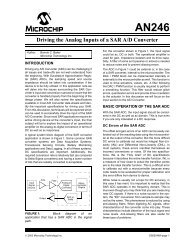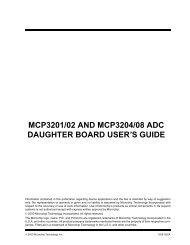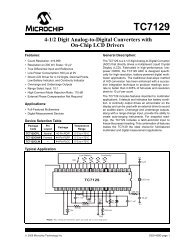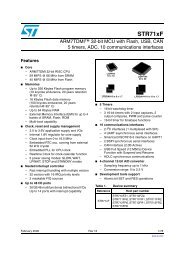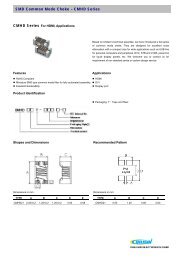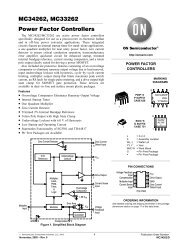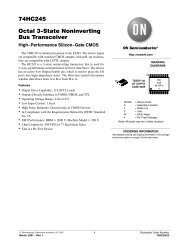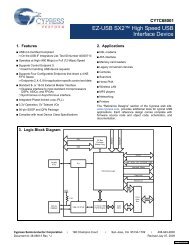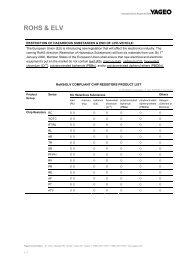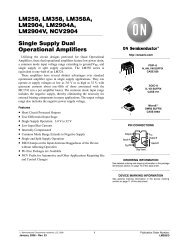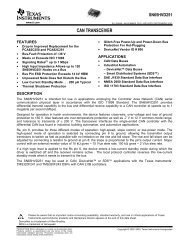Ultralow power ARM-based 32-bit MCU with 384 Kbytes Flash ... - Keil
Ultralow power ARM-based 32-bit MCU with 384 Kbytes Flash ... - Keil
Ultralow power ARM-based 32-bit MCU with 384 Kbytes Flash ... - Keil
- No tags were found...
You also want an ePaper? Increase the reach of your titles
YUMPU automatically turns print PDFs into web optimized ePapers that Google loves.
STM<strong>32</strong>L162VD, STM<strong>32</strong>L162ZD, STM<strong>32</strong>L162QD, STM<strong>32</strong>L162RDElectrical characteristics6.3.16 Communications interfacesI 2 C interface characteristicsUnless otherwise specified, the parameters given in Table 52 are derived from testsperformed under ambient temperature, f PCLK1 frequency and V DD supply voltage conditionssummarized in Table 10.The STM<strong>32</strong>L162xD product line I 2 C interface meets the requirements of the standard I 2 Ccommunication protocol <strong>with</strong> the following restrictions: SDA and SCL are not “true” opendrainI/O pins. When configured as open-drain, the PMOS connected between the I/O pinand V DD is disabled, but is still present.The I 2 C characteristics are described in Table 52. Refer also to Section 6.3.12: I/O currentinjection characteristics for more details on the input/output alternate function characteristics(SDA and SCL).Table 52.I 2 C characteristicsSymbolParameterStandard mode I 2 C (1)Fast mode I 2 C (1)(2)Min Max Min MaxUnitt w(SCLL) SCL clock low time 4.7 1.3t w(SCLH) SCL clock high time 4.0 0.6t su(SDA) SDA setup time 250 100t h(SDA) SDA data hold time 0 (3)0 (4)900 (3)µst r(SDA)t r(SCL)SDA and SCL rise time 1000 20 + 0.1C b 300nst f(SDA) SDA and SCL fall time 300 300t f(SCL)t h(STA) Start condition hold time 4.0 0.6t su(STA)Repeated Start conditionµs4.7 0.6setup timet su(STO) Stop condition setup time 4.0 0.6 μst w(STO:STA)Stop to Start condition time(bus free)4.7 1.3 μsC bCapacitive load for each busline1. Guaranteed by design, not tested in production.400 400 pF2. f PCLK1 must be higher than 2 MHz to achieve standard mode I²C frequencies. It must be higher than 4 MHzto achieve fast mode I²C frequencies. It must be a multiple of 10 MHz to reach the 400 kHz maximum I²Cfast mode clock.3. The maximum hold time of the Start condition has only to be met if the interface does not stretch the lowperiod of SCL signal.4. The device must internally provide a hold time of at least 300 ns for the SDA signal in order to bridge theundefined region of the falling edge of SCL.Doc ID 022268 Rev 2 95/124




